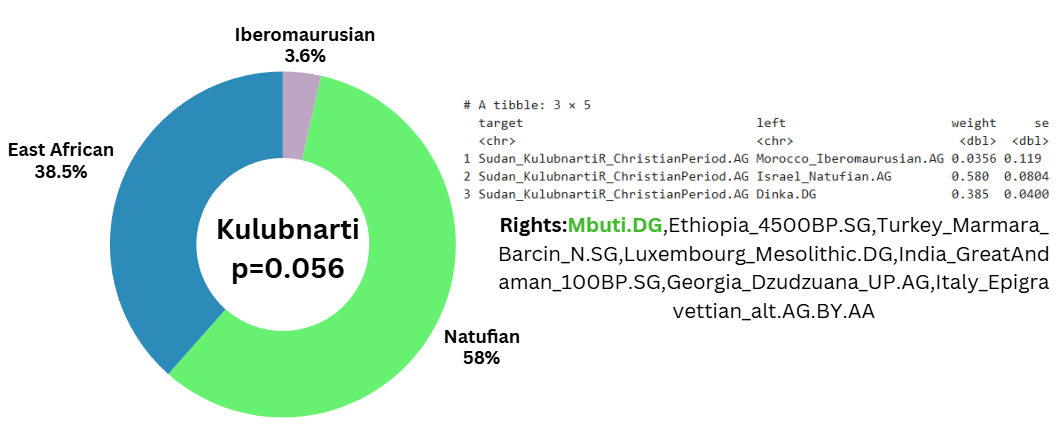Nubians 23andme format samples
The Kulubnarti Nubians were a Christian community that lived in what is now northern Sudan during the 8th century AD. They inhabited an island on the Nile known as Kulubnarti, situated between the Second and Third Cataracts. At this time, Nubia was dominated by Christian kingdoms, and the people of Kulubnarti likely fell under the influence of either the Kingdom of Makuria or its northern neighbor, Nobatia, both of which were major Christian states in medieval Nubia.
Linguistically, the Kulubnarti Nubians would have spoken an early form of Nubian, specifically a variety of Old Nubian, which was used in Christian religious texts of the time. Old Nubian is part of the Nilo-Saharan language family and is closely related to modern Nubian languages such as Dongolawi (Andaandi) and Kenzi (Mattokki), spoken further north. These languages, along with Nobiin, trace their origins back to the Nubian migration from the southwest into the Nile Valley.
The genetics of these nubian samples reveals that they were majority west eurasian, scoring 60 percent dzudzuana, which is a west eurasian source of ancestry, and 39 percent east african, or black, ancestry.
Breaking down the ancestry composition into more recent groups, the majority of nubian ancestry is Natufian, with minor iberomaurusian and east african contributions.
With G25, these samples plot close to Eritrean and Ethiopian Tigray people, who are among the most middle eastern shifted horn africans.
For this video, I gathered the raw DNA of 9 kulubnarti samples of high quality. I ran them through my Trait Predictor tool for DNA analysis, which you can purchase from the link in description.




